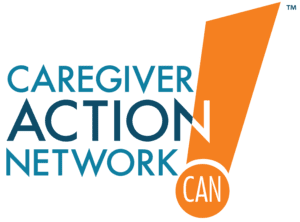Comparing Survey Stats and Understanding Why They Differ
Comparing Survey Stats and Understanding Why They Differ

How many family caregivers are there in the U.S.? Are there 22.4 million, 25 million, 52 million or 54 million? What is the origin of the disparity between these numbers? The reality is that they are all correct in the context of the information presented and the processes used for data collection and reporting. The population surveyed and the order and phrasing of questions all impact the outcomes. That is why it is important to understand the differences. The following explanation is not an exhaustive analysis of the differences between recent surveys of family caregivers, but rather a description of the different approaches and populations surveyed. The descriptions presented have all been reviewed for accuracy.
Examining Caregiving Disparities in the U.S.: A Comparative Analysis
In 1997, the National Alliance for Caregiving (NAC) and the American Association of Retired Persons (AARP) published its landmark report — Caregiving in the US. This widely referenced report documented that there were 22.4 million households involved in caregiving in the US at that time, highlighting the disparities in caregiver statistics.
The definition of Caregiving in this random sample research effort includes:
- Caring for persons over the age of 50
- Occurring some time within the past 12 months
- Including ADL’s (Activities of Daily Living) and IADL’s (Instrumental Activities of Daily Living)
In 1998, Peter Arno Ph.D., and others published information on the market value of caregiver services. Many widely quote the estimate of $196 billion per year for caregiver contributions in unpaid labor and services.
Estimating the Number of Informal Caregivers
To develop this valuation, Dr. Arno needed to determine the number of individual caregivers, as opposed to households in the US. He based his mid-range estimate of 25.8 million caregivers on data from the National Survey of Families and Households (NSFH) for 1987 and 1988 and the Survey of Income and Program Participation (SIPP) for 1986. They projected these data forward to 1997, revealing significant disparities in caregiver counts across different surveys.
- Caring for persons at least 15 years of age (SIPP) or 18 years of age (NSFH)
- Providing personal care
- Needing assistance because of a health condition (SIPP) or disability or chronic illness (NSFH)
Also in 1998, The Assistant Secretary for Planning and Evaluation (ASPE) and the Administration on Aging of the U.S. Department of Health and Human Services published, Informal Caregiving: Compassion in Action. The data analysis had two parts. Part I analyzed data on “informal” care from the National Survey of Families and Households, NSFH (1987 and 1992). This analysis resulted in an estimate of 52 million Americans (31% of the adult population age 20-75) who during the course of any year provide unpaid care to a family member or friend who is ill or disabled. Part II looked at a more specific population of caregivers, namely chronically disabled elders. The analyzed data for Part I of the study include significant disparities in caregiver estimates depending on the criteria used.
- Caring for persons of all ages
- Providing unpaid care was defined very broadly to include any types of assistance
- Short or long-term care
Latest Findings
In the summer of 2000, the National Family Caregivers Association published a report. It reported that 54 million people provided some level of caregiving during the past year. The number, slightly higher than the US government estimate, was based on random sample survey research. The definition of caregiving used in this research effort, which surveyed adults over the age of 18, encompassed various aspects, highlighting the disparities including:
- Caring for persons of all ages
- Providing care (interpretation of the term care was left to the respondent)
- Occurring some time within the past 12 months
- Care was necessitated because of a disability or chronic illness or consequences of old age
Bruskin Research surveyed NFCA. They used a custom-designed computer program. This program automatically develops a weighting factor for each respondent, allowing the survey results to be generalized to the population as a whole.
Suzanne Mintz, President/Co-founder of the National Family Caregivers Association, and Connie Ford, RN, MPA, Caregiver/Caregiving Consultant, prepared this explanation.
For copies of the reports referenced above contact:
Caregiving in the US
National Alliance for Caregiving
4720 Montgomery Lane
Bethesda, MD 20814
301-718-8444
lesplooster.nac@erols.com
The Economic Value of Informal Caregiving
United Hospital Fund of New York
350 Fifth Avenue — Empire State Bldg.
New York, New York 10118
212-494-0700
clevine@uhfnyc.org
Informal Caregiving: Compassion in Action
US Dept of Health and Human Services
Office of the Assist Secretary for Planning and Evaluation
200 Independence Avenue SW
Washington, DC 20201
202-690-6172
pdoty@osaspe.dhhs.gov
NFCA Survey 2000
National Family Caregivers Association
10400 Connecticut Avenue, Suite 500
Kensington, MD 20895
301-942 6430 / 800-896-3650
info@thefamilycaregiver.org
www.thefamilycaregiver.org



